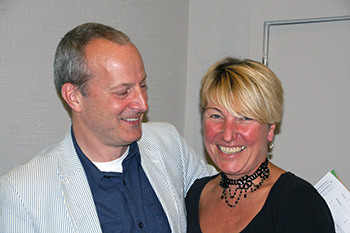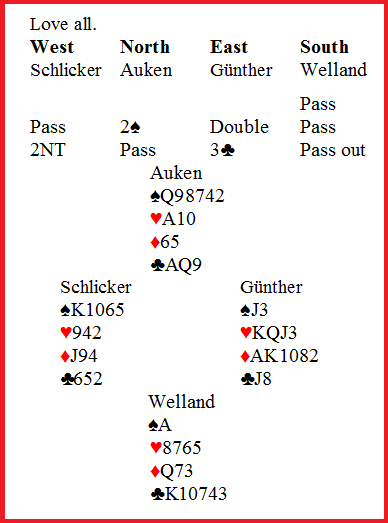 Fritsche (Open), and Nehmert (Women) will go to Opatija’s European Championships.
Fritsche (Open), and Nehmert (Women) will go to Opatija’s European Championships.
Pony Beate Nehmert won 1995 and 2001’s Venice Cup, and was 2005 and 2007’s runner-up; her team, with Cristina Giampietro, Claudia Vechiatto, Marie Eggeling, Elke Weber and Anne Gladiator, defeated 171-100 in eighty boards Claudia Lüßmann, Susanne Kriftner, Karin Wenning and Gisela Smykalla.
In Open Trials there is another woman who, with her strong partner Daniela Von Arnim, made the story of the great female German Team in the last twenty years: Sabine Auken. She, with her new partner Roy Welland, an American now living in Germany, is playing for Fritsche.
Open Teams, semi-finals results:
Jörg Fritsche, with Sabine Auken, Roy Welland, Josef Piekarek, Alexander Smirnov, Roland Rohowsky, has defeated 172-167 the Team Helmut Häusler, with Martin Rehder Max Ellerbeck Felix Zimmermann and Michael Gromöller.
Christian Schlicker, with Claus Günther, Matthias Felmy, Tomasz Gotard, Nedju Buchlev, and Sebastian Reim, has defeated 163-144the Team Sankt Jakobi, with Robert Maybach,Wolf Stahl, Christian Schwerdt, and Julius Linde
In final, Fritsche defeated Schlicker by 209-147.
The hand: Pre-empting

The final contract came from a misunderstanding, of course; Günther took the 2NT for minors; but what is interesting in this hand is the pre-empt of Sabine Auken. In their Convention Card the range of weak two is 3-9, and she had twelve.
A good reference in the issue is the “Guide to completion of the World Bridge Federation Convention Card”, by the Canadian champion Eric Kokish. In the Weak Two Opening paragraph he advises to specify the style according with these definitions: Standard, i.e. fair six-card suit; Undisciplined, with bad six-card suit or often fair five-card suit acceptable; Random, anything is acceptable. Accordingly, and also about the strength, Sabine was undisciplined.
In 1993 Sabine Auken and Ron Andersen wrote a book about pre-empts: “Pre-empts from A to Z”, published by Magnus Books. At page 20 Authors stated requirements for major weak two opening: among others, 5-11 points and at least two of the top four honours in the suit; these values are almost the same lately stated by Rhoda Walsh in her study on the matter (Neapolitan Club is going to publish it by the end of the year).
Sabine, instead, had one honour, and it was a minor one. On the other hand, the strength of this hand was enough for one level opening: there are 12 HCPs and 2,5 defensive tricks (♣AQ and ♥A). Did she perhaps offset the overall strength of the hand and the weakness of the suit? Or did she prefer the hampering effect of pre-empting, in third position? The response might be more complex. Let’s write the hand again:
a) ♠Q98742 ♥A10 ♦65 ♣AQ9
Let’s suppose to open it 1♠; after the response 1NT it needs the rebid 2♠. Let’s now trade the spade queen for the ace, thus we have (b):
b) ♠A98742 ♥A10 ♦65 ♣AQ9
Still it needs 2♠ after 1NT response, and then how could responder know whether opener had (a), which must be passed at once, or (b), which deserved a game try with suitable cards?
In brief, the “Constructive Weak Two”, as it is called the opening in the range 5-12, recommended by Rhoda Walsh and the same Sabine in her 1993’s book (and by Eugenio Chiaradia in Neapolitan Club), is less frequent than the aggressive one in the range 3-9, but helps in better depicting the one level opening.
Admittedly, in third position and not vulnerable, as it was, every link looses, of course; the BBO commentator, William Frisby, intelligently reported: “A pre-empt that is known to be weak is a blunt sword! Said Terence Reese”.
***
Paolo Enrico Garrisi